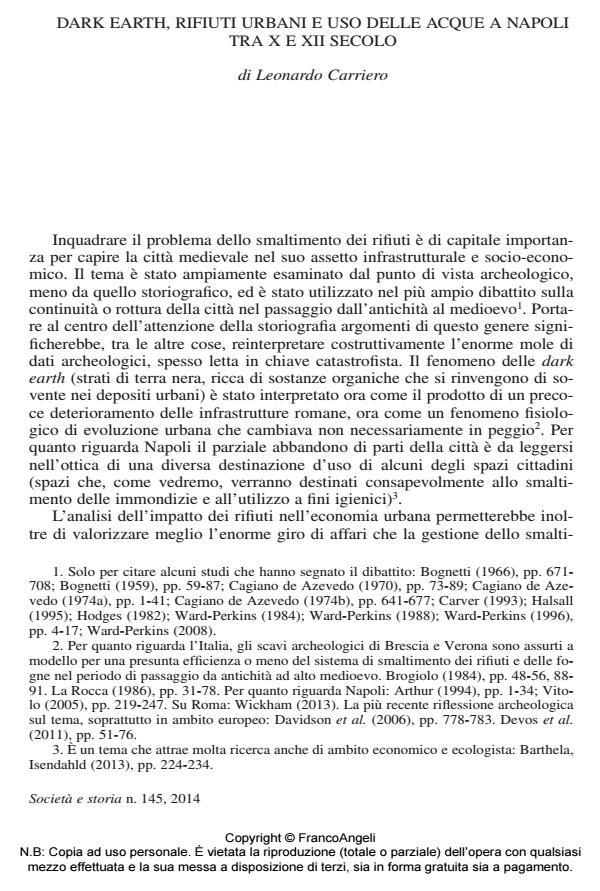Dark earth, rifiuti urbani e uso delle acque a Napoli tra x e XII secolo
Titolo Rivista SOCIETÀ E STORIA
Autori/Curatori Leonardo Carriero
Anno di pubblicazione 2015 Fascicolo 2014/145
Lingua Italiano Numero pagine 26 P. 433-458 Dimensione file 584 KB
DOI 10.3280/SS2014-145001
Il DOI è il codice a barre della proprietà intellettuale: per saperne di più
clicca qui
Qui sotto puoi vedere in anteprima la prima pagina di questo articolo.
Se questo articolo ti interessa, lo puoi acquistare (e scaricare in formato pdf) seguendo le facili indicazioni per acquistare il download credit. Acquista Download Credits per scaricare questo Articolo in formato PDF

FrancoAngeli è membro della Publishers International Linking Association, Inc (PILA)associazione indipendente e non profit per facilitare (attraverso i servizi tecnologici implementati da CrossRef.org) l’accesso degli studiosi ai contenuti digitali nelle pubblicazioni professionali e scientifiche
Il tessuto urbano napoletano tra X e XII secolo si caratterizza per una spiccata complessità infrastrutturale. Il sistema fognario tardoantico si perpetua nel corso dei secoli altomedievali e viene parzialmente integrato con nuove strutture di raccordo, che mettono in comunicazione i quartieri periferici alla cloaca massima. Alla rete di bagni pubblici e diaconie si affianca un nuovo tipo di servizio basato sull’imprenditoria privata. Le latrine costituiscono una parte sempre più importante del paesaggio urbano di Napoli e vengono gradualmente a funzionalizzare gli spazi vuoti all’interno della città. L’accumulo e lo smaltimento delle immondizie e dei rifiuti solidi viene regolamentato e organizzato in modo da sopperire alle esigenze di una città in fase di espansione proto-industriale e marittima. .
Parole chiave:Sistema idrico medievale; sistema fognario medievale; bagni nel medioevo; latrine medievali; smaltimento rifiuti medioevo; Napoli medievale
- Quarant'anni di medioevo sulle pagine di «Società e storia»: 1978-2019 Paolo Grillo, in SOCIETÀ E STORIA 178/2023 pp.697
DOI: 10.3280/SS2022-178004
Leonardo Carriero, Dark earth, rifiuti urbani e uso delle acque a Napoli tra x e XII secolo in "SOCIETÀ E STORIA " 145/2014, pp 433-458, DOI: 10.3280/SS2014-145001